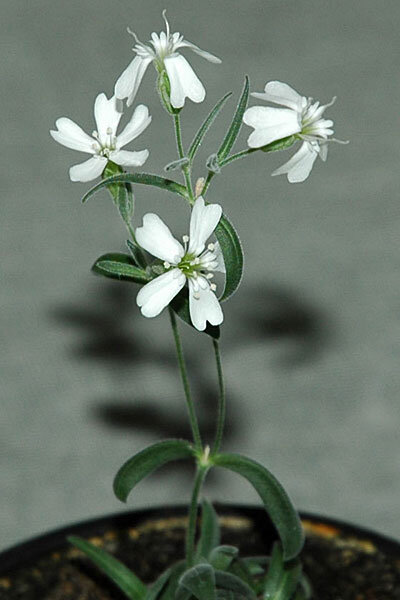How scientists brought 30,000-year-old flower back to life
Loading...
Thirty thousand years after their burial on the Siberian tundra, immature fruits have been cultivated into small, weedy plants — the oldest successful regeneration of a living plant from ancient tissue.
The plants, Silene stenophylla, grew and produced lacy white flowers. When fertilized, the ancient plants fruited and produced viable seeds of their own.
"This is very exciting," said Jane Shen-Miller, a University of California, Los Angeles biologist who was not involved in the study. "These tissues are viable after, say, 30,000 years. That is very, very interesting."
Shen-Miller led an earlier project that germinated and grew a 1,300-year-old lotus seed from northern China. Another group of researchers germinated a 2,000-year-old palm date seed from Israel in 2005, the oldest germinating seed known to date.
In the current study, published online Monday (Feb. 20) in the journal Proceedings of the National Academy of Sciences, researchers from the Russian Academy of Sciences did not germinate the seeds directly, but took immature fruit tissue and cultured it in a nutrient-rich goop. The cells in this fruit tissue have the ability to transform into all parts of the plant, and they did, growing into seedlings that the researchers then transplanted into regular soil.
The fruit tissue came from animal burrows frozen in permafrost by the Kolyma River in northeastern Siberia. Small creatures, such as an Arctic species of ground squirrel, once stored away tens of thousands of seeds and fruits in these burrows, where they remained in a deep freeze. The newly revived fruit tissue has been radiocarbon dated to between 28,000 and 32,000 years old. (This method dates material based on the decay rate of its radioactive carbon.) [Album: Life in the Arctic]
"This is a plant that has a lot of built-in mechanisms for survival in a harsh environment," Shen-Miller told LiveScience. Most plant seeds die within a few years, she said. But a few hearty species, including the 1,300-year-old lotus and S. stenophylla have built-in mechanisms that either preserve or repair the plants' DNA.
These species' amazing longevity makes them a good place to look for clues about how humans might be able to beef up our own DNA repair, perhaps preventing cancer, Shen-Miller said. Their genetics might also be useful if replicated in modern crops, since stored seeds quickly lose their nutrients and ability to grow.
"It's unique to find plants that have this potential. … To identify a few of these plants is really good," Shen-Miller said. "They have the DNA resources for us to study."
You can follow LiveScience senior writer Stephanie Pappas on Twitter @sipappas. Follow LiveScience for the latest in science news and discoveries on Twitter @livescience and on Facebook.





